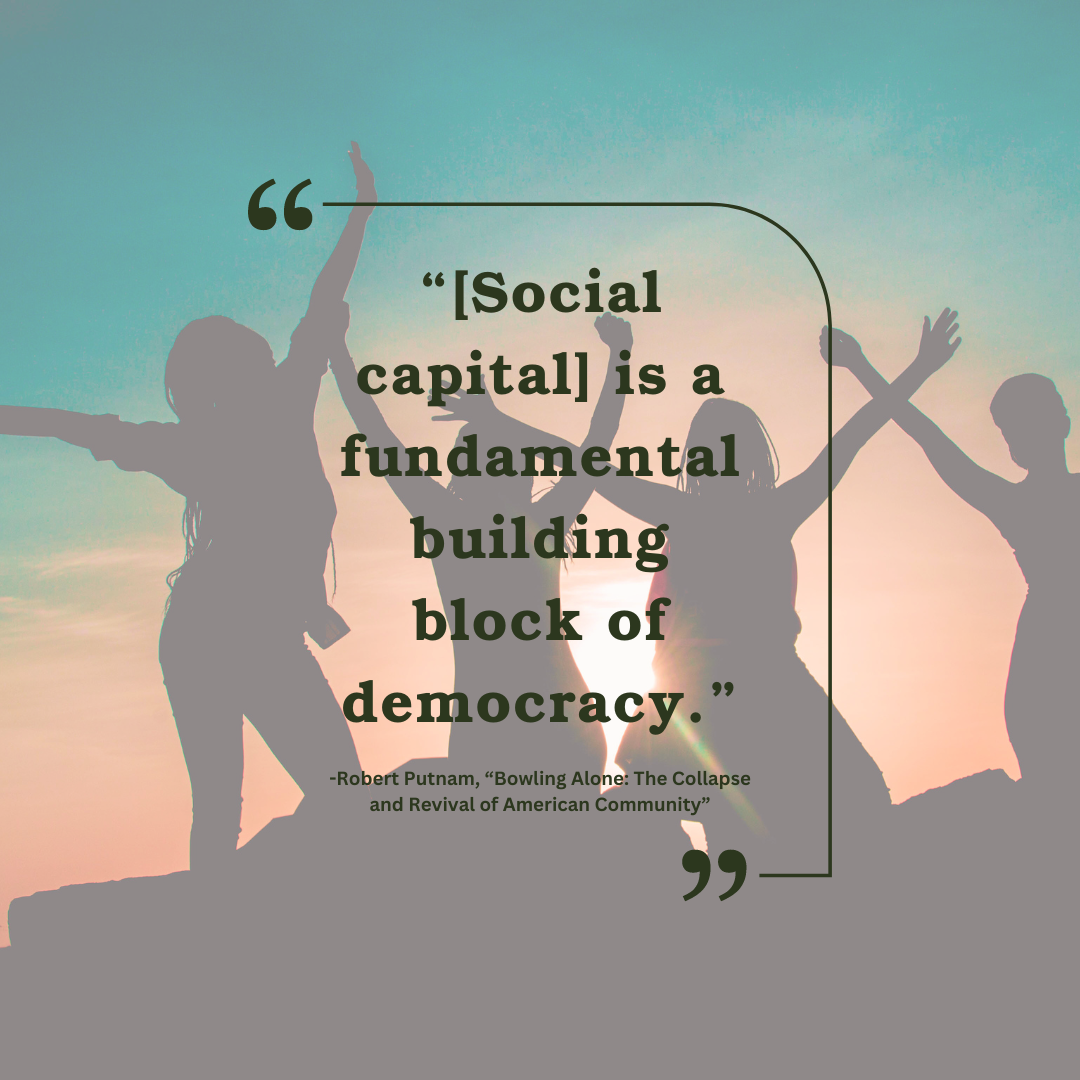The Power of Social Capital: Building Community Resilience at Vine and Fig Tree
Last week was challenging for me at work; not only was it my second consecutive week in a row working over 50 hours (today marks my third), but it was a week of constant task-switching. I found myself writing reports for an upcoming Employee Well-Being presentation, hustling for fundraising (which is familiar in non-profit work), meeting with residents and clients of a local shelter desperate for employment, testifying in court about our services for a former foster youth, and delivering meals to another former foster youth who just had a baby. Amid the highs-like the joy of new babies and unexpected donations-and the lows-such as witnessing the sheer need for employment and resources and navigating the emotional rollercoaster of the court system-one thought kept surfacing: what would have happened if these individuals had more social capital?
Recently I read “The Meth Lunches” by Kim Foster, a brilliant exploration of the intersections of trauma, community, ACEs, food, addiction, homelessness, and ordinary every-day people just trying to do their best to help. In it, Foster quoted political scientist and Harvard faculty member Robert Putnam’s book, “Bowling Alone: The Collapse and Revival of American Community” in which he states “Social capital is the fundamental building block of democracy.”
Through my work at Vine and Fig Tree, I’ve witnessed firsthand the vital importance of social capital-the sheer, life saving, and life giving, importance of it. Yet, it’s also something overlooked in our day to day lives, despite being ever present. Need a job? Reach out to your network. HVAC on the fritz? Someone knows a guy. Mental health support? Your circle has your back.
But what if you had no one to turn to? This is the reality for many vulnerable individuals we serve, from foster youth whose social capital is primarily through their case workers to shelter clients who often lack any capital at all. When you’re solely focused on trying to survive, cultivating social capital becomes an uphill battle against trauma, societal barriers, and sheer exhaustion. Social capital encompasses trust, reciprocity, and civil engagement among community members. By paraticipating in our social networks, we build trust and cooperation, enabling us to take problems and make informed decisions.
This week alone, I’ve witnessed my own social capital providing clothing and hygiene items, an internship opportunity to a former foster youth, mentorship, and connecting shelter residents with job opportunities. My social capital benefits Vine and Fig Tree, and in return, Vine and Fig Tree’s social capital has enriched both myself and countless others lives.
Putnam’s research illustrates how isolation leads to a perceived decline in quality of life, reduced civic engagement, and diminished confidence. This resonates deeply with what we see at Vine and Fig Tree. I’ve observed the confidence in former foster youth when they’re surrounded by supportive networks, and the hope sparked in unhoused individuals when they gain access to education and resources. Moreover, I’ve seen the relief in both corporate employees and survivors as they unload emotional burdens, finally seen and supported by others.
In today’s fast-paced and interconnected world, our connections with others aren’t just personal; they can be the thing that gives someone hope when they need it the most. Building social capital isn’t quick, but it’s always worthwhile. At Vine and Fig Tree, we’re committed to building trust, fostering connections, and engaging in our communities. If you’re interested in joining us, we’d love to see you by our side.

